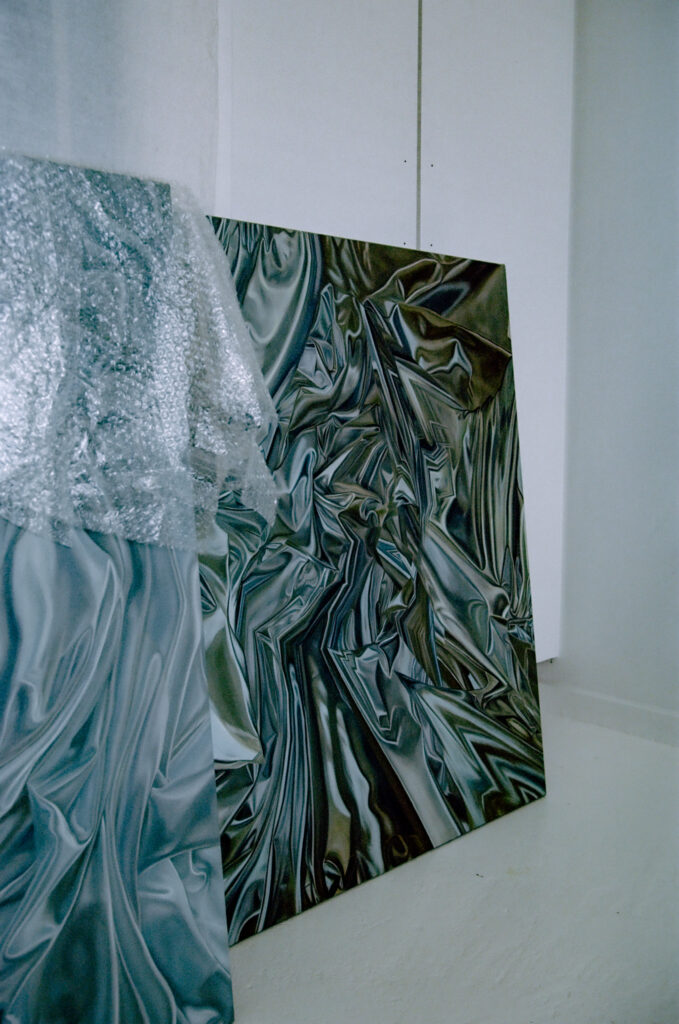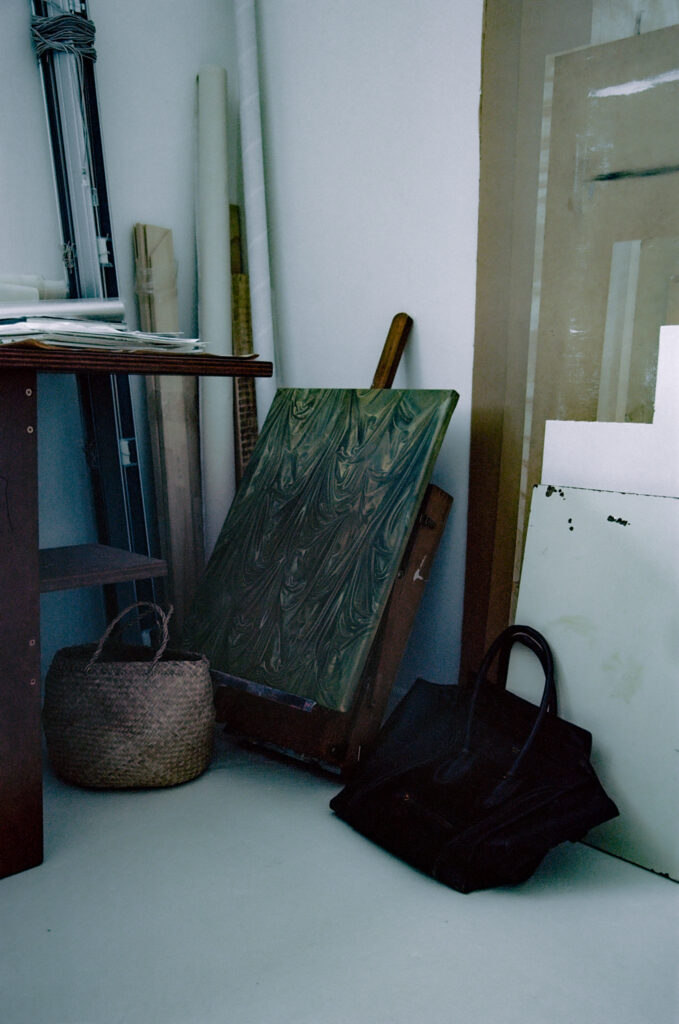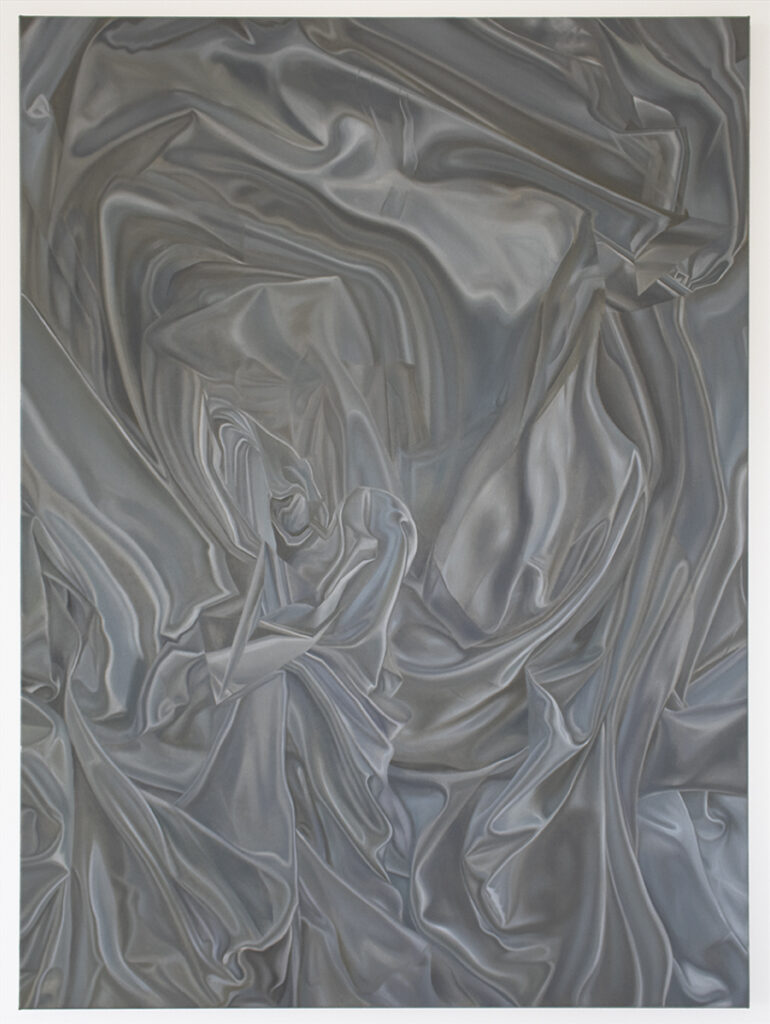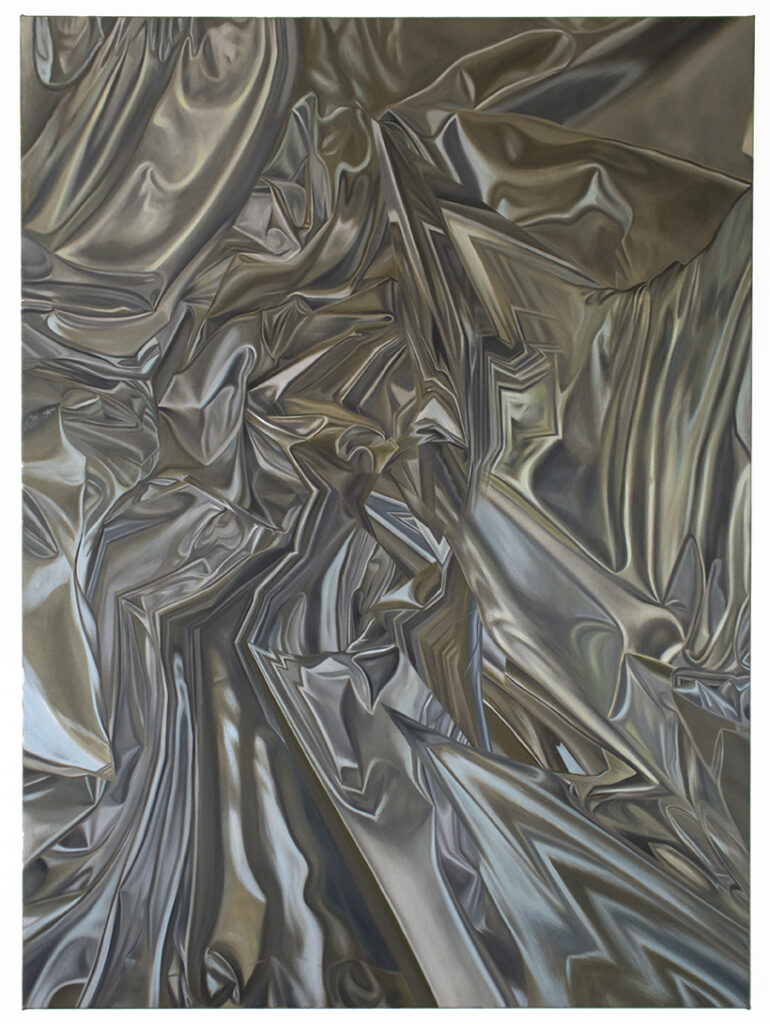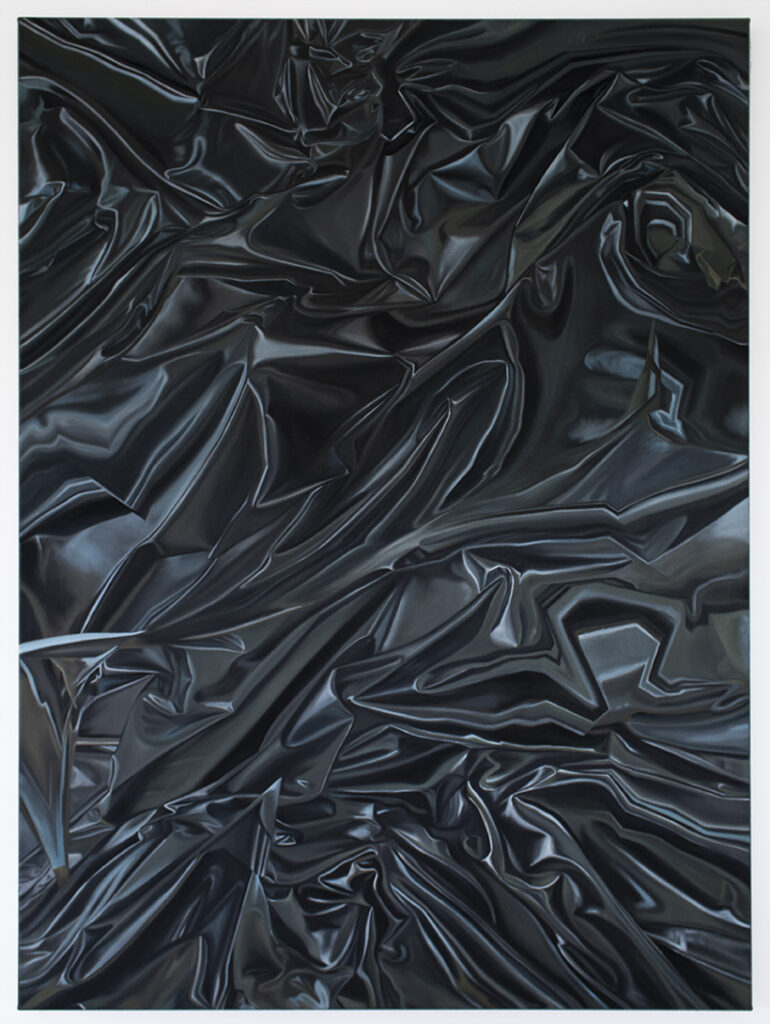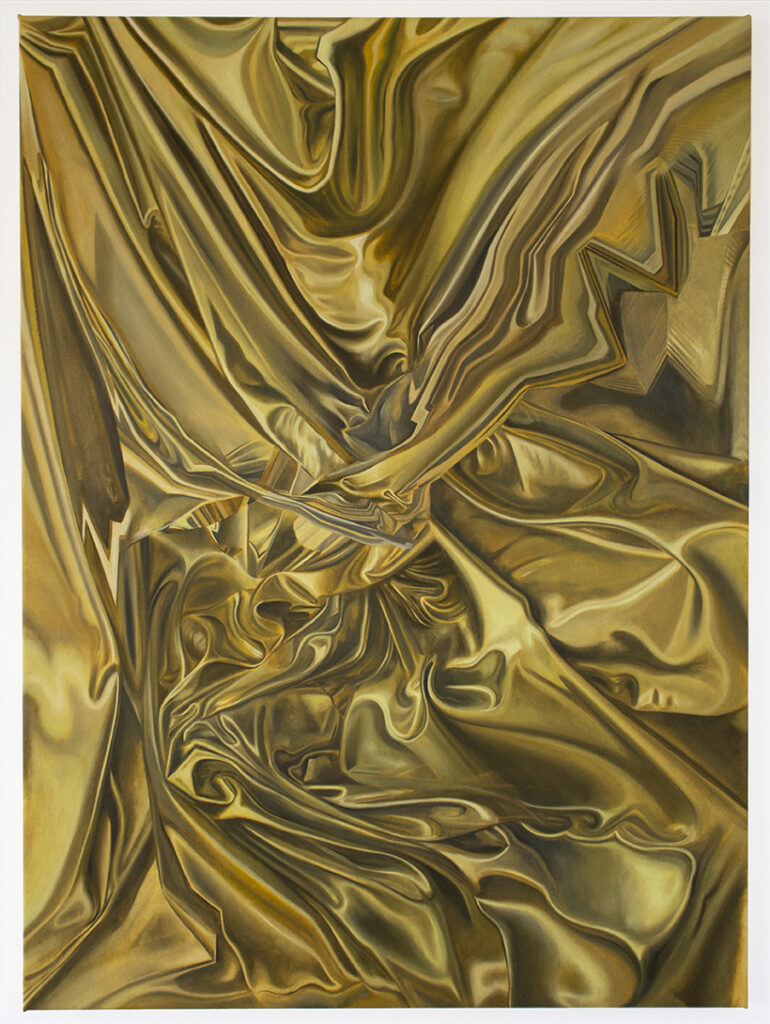In The Studio With Tom Pendergast
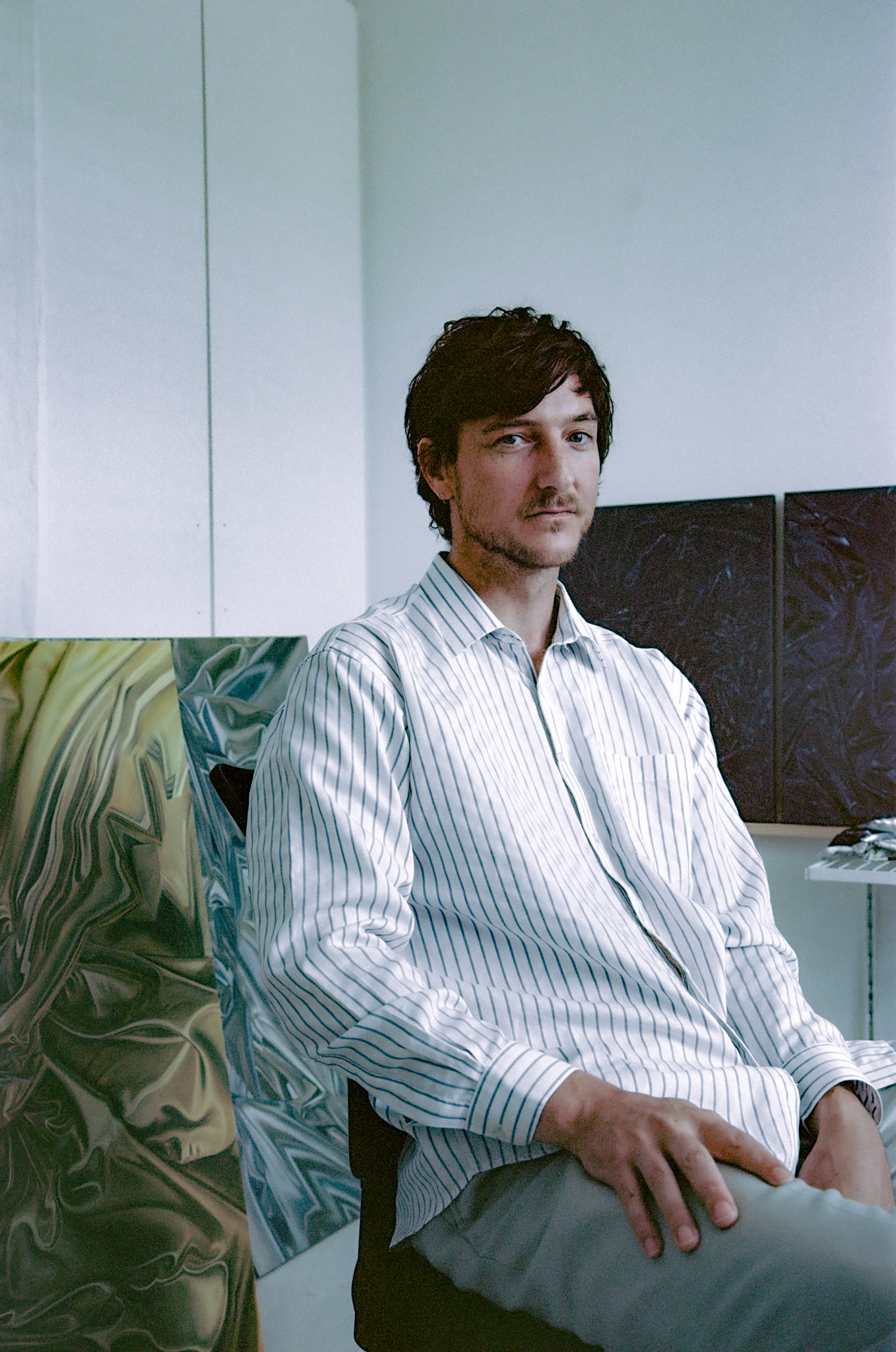
The first time I met Tom Pendergast, I was a last-minute plus-one to a dinner party he was hosting. The small living-slash-dining room was fitted with a tightly edited line-up of artworks, one of which, as it turned out, was Tom’s own. During dinner, he casually quipped something about "the art object being meta-stability born from indeterminacy,” but the conversation moved on before I could ask him what exactly he meant. Half an hour later, he was riffing on the perfect harmony of a 2003 Hilary Duff song. What do they say about the concept of the duality of man? I’d like to think it refers to someone who can wax lyrical about complex art theory and land every line of a decades-old pop anthem. Surely, Tom Pendergast is that man.
CS: Painting is a relatively new tact in your art practice. Why the shift to such a traditional art medium? What brought you here?
TP: I always painted when I was younger, but never really took it seriously. In my early practice, I was doing a lot of sculptural work and installations. The initial shift to painting was a practical one based on the studio limitations I had when COVID hit. I set up a tiny three-by-three-meter room in my house that I was able to use as a studio. I didn’t have any materials or anything.
CS: So, painting was a matter of practicality? Your style today is a product of necessity.
TP: Yes, it was a matter of practicality. I began making these really little paintings. I had so much time on my hands, so they were very considered. Stylistically, I can see that the type of painting I’m doing now, almost three years later, arose out of that period. The constraints of the studio space and limited materials has led me to work using only a limited amount of paint. My style is very tidy. On one hand, it’s a product necessity. And on the other, I don’t really like having expressive brushstrokes in my paintings. I don’t like seeing my hand in the work, so restraint and control feels more natural to me.
CS: I find it interesting that you say you don’t want to see your hand in the painting. If you remove the evidence of your hand, does that mean the painting, as an object, become the more prominent component?
TP: I don’t necessarily see my role, as the artist or the creator of my paintings, as having anything to do with the meaning of the paintings. To me, they’re almost like a diagrammatic representation of someone else’s idea. I’m not coming up with any of the theory or history imbedded in the work. I’m just reading what other people are talking about. And then literally trying to create a diagram of that thought. I’m not an academic or in field of arts academia. I’m not generating or creating theories, but I am interested in the poetics of those theories. And I think that’s a role that anyone can play.
CS: Is there something new that you're able to grasp with this medium that you couldn’t do before?
TP: Well, you can do anything with painting, right? It’s infinite. You can create any image you want and still retain a kind of physicality that is recognisable. There’s a sort of bodily physicality to painting where you know that someone has created the work with their hand and with liquid colour, and they’ve shaped that liquid colour into its form. You always have that in the back of your mind when you're looking at a painting as part of its marvel.
CS: In your earlier paintings, a collision exists between hyper-vivid pop cultural symbols and the very formalist gestures of painting or painting theory. Is that a tension that you're consciously trying to cultivate in your work?
TP: I haven’t really figured out what my filter is in terms of reference material. My earlier more figurative paintings are definitely experiments in both technique and meaning. In retrospect, I wasn’t necessarily that concerned with the content, but I can see that it all points towards certain things in my life, my upbringing in a regional town or the digital spaces that I like to be in.
CS: The duality that we're touching on is more inherent than deliberate?
TP: I think so, but I’m definitely aware of it. It’s interesting because I’m not really trying to participate in an ironic representation of popular culture, even though it probably comes across like that. I feel like I’m being sincere about my approach.
CS: Your most recent work depicts the many folds in a piece of cloth or fabric. There’s a feeling of hyper- tactility to them and a sensation of structure, almost as if they were built or carved.
TP: All the fabrics captured in this series are painted using only four colours: blue, silver, black and gold. All the dimensionality is made using exactly the same four paint tubes, [they are] just mixed differently or overlap each other. In that way, they all work together, just leaning in slightly different directions. The reflective nature of the fabrics, the way the light hits them, is represented by pure white and pure black. And then all of the colours in between add to the visual complexity of the image structure.
CS: There was something you said to me the first time we met that has stuck with me. I made a note of it in my phone at the time, and I’ve been trying to kind of get my head around it since. You said that “the art object is meta-stability born from indeterminacy.” Can you elaborate?
TP: Sure [laughs]. What you’re referring to is Lucretius’ idea of ‘The Swerve’ and his poem De rerum natura. He talks about ‘The Swerve’ as being an indeterminant drive that affects the material world. He’s weighing in on the determinism versus free will debate as it existed in biblical times. What interests me about that, when applied to making an artwork, writing a poem or anything creative, is that by taking an indeterminate line or colour or word and applying it to the page, you’re making it determinate or determining it. By putting it on the canvas or writing it down, you make it meta-stable. (Gilles) Deleuze and (Félix) Guattari describe it as “becoming”, which is the limiting of all possible futures into the reality of the present. So, anything could possibly happen, but what is actually happening is what is happening. You’re negating all possible futures by realising the current, the present.
CS: By committing a mark to the page?
TP: Yes. Creation is just a representation of that. It’s happening in every aspect of the world and universe at all moments in time—you’re just channeling that onto a canvas. I think that the fabric paintings are a result of that line of thought, because of the way the fabric and drapery falls. If you were to drop a cloth on the ground, there’s a million bazillion clearly different ways that that cloth could land, and the composition that that cloth could make. But the way that it ends up, the way that it ultimately lands, is the metastable state that that cloth has taken.
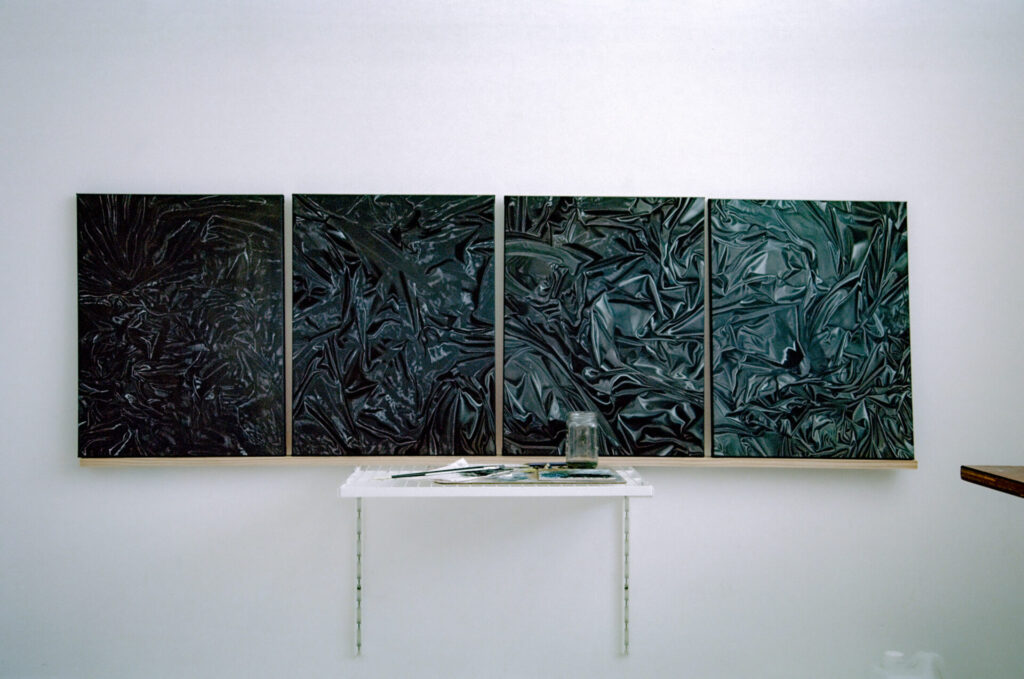
TP: ‘The Swerve’ is the aspect of indeterminacy that comes into how things unfold. There always clearly determinate elements, you know? You drop a ball, that ball is going to fall. But your decision to pick the ball up and hold it there in the first place is the indeterminate element of that scenario. And that’s what artmaking is, right? Artmaking throughout the modernist period was just an awareness of itself, and an awareness of its own processes and why it needs to exist. My work is just another way that that trajectory of introversion is manifesting through me rather than anyone else. Does that make sense?
CS: Yes. I mean, it’s no small idea.
TP: But it kind of is? It’s kind of the only idea, right? It’s the simplest idea in the world. It’s just a process describing itself. And it, in turn, is just the simplest process.
CS: Despite this suggestion of simplicity, I find your practice to be intellectually rigorous and carefully researched. Can you tell me about the process that occurs before you come to paint? What is the prelude? What happens before ‘The Swerve’?
TP: A lot of the research I’ve been doing before and during the making of my current series of paintings has been on the history of drapery in painting. I’ve been looking at the French ancien regime, such as the court painters of Versailles. They really took drapery painting for a walk, because everything was luxurious and pompous and big and shiny. That’s what the cloth series is supposed to be: really sumptuous, silky, velvety paintings, with more contours than you would ever need to have to adequately express what I’m trying to express. I used to be really into Georges Bataille and The Accursed Share which is about the drive towards art in the first place, because art doesn’t have a necessary utility in the world. That’s what makes it special. That’s what drives us towards it—it’s beyond the drudgery of everyday utility. My cloth paintings are kind of an extension of that line of thinking as well. With these works I was looking at drapery because, in the past, figurative painters have used it to flex out a little bit, to say, “check out this extremely sumptuous, luxurious part of this painting!” Painting drapery allowed them to be a little bit more expressive, a little bit more abstract, perhaps, than the figurative elements of the work. So, for my practice, I wanted to get rid of all of the figurative elements and concentrate just on the drapery. And then you can really collapse the abstract-figuration binary, while still maintaining both.
CS: Your cloth paintings are incredibly precise and exacting. They feel like they mount both the hyperreal while falling into abstraction at a certain point. Is that a duality that you are aware of or deliberately trying to achieve?
TP: I’ve been engaging in materialist theory lately, and sort of new materialism. I’m not very well versed, but a primary concern of materialist theory is to collapse the duality between physics and metaphysics, the physical world and the metaphysical world, the mind-body duality. Following that line of thought, my work is supposed to be both physical and psychological at the same time in the same object. So, that’s kind of the intention.
CS: What do you hope people might take away from your work? You refer to them as diagrams, which, by definition, suggests that they’re instructional. Is there something you want viewers to see or understand?
TP: No way. Definitely not anything in particular. Even this conversation, I’m usually hesitant to have this conversation with people. I don’t mind having it, but I also don’t want to direct someone’s engagement. My intention or hope is that there will be an instinctual response. You will instinctually understand what I’m trying to do.
Artist Josh Robbins On 'Natural Abstraction'
By Riley Orange
Renée Estée’s Choral Ode
By Chloe Borich
Jason Phu on Latest Exhibition 'Analects of Kung Phu' at ACMI
By Alexia Petsinis
Iranian artist Shirin Neshat moves between fiction and reality
By Rachel Weinberg
Diego Ramírez
Vampires of the Earth
By Georgia Puiatti
Keep my head above water
By Mahmood Fazal
